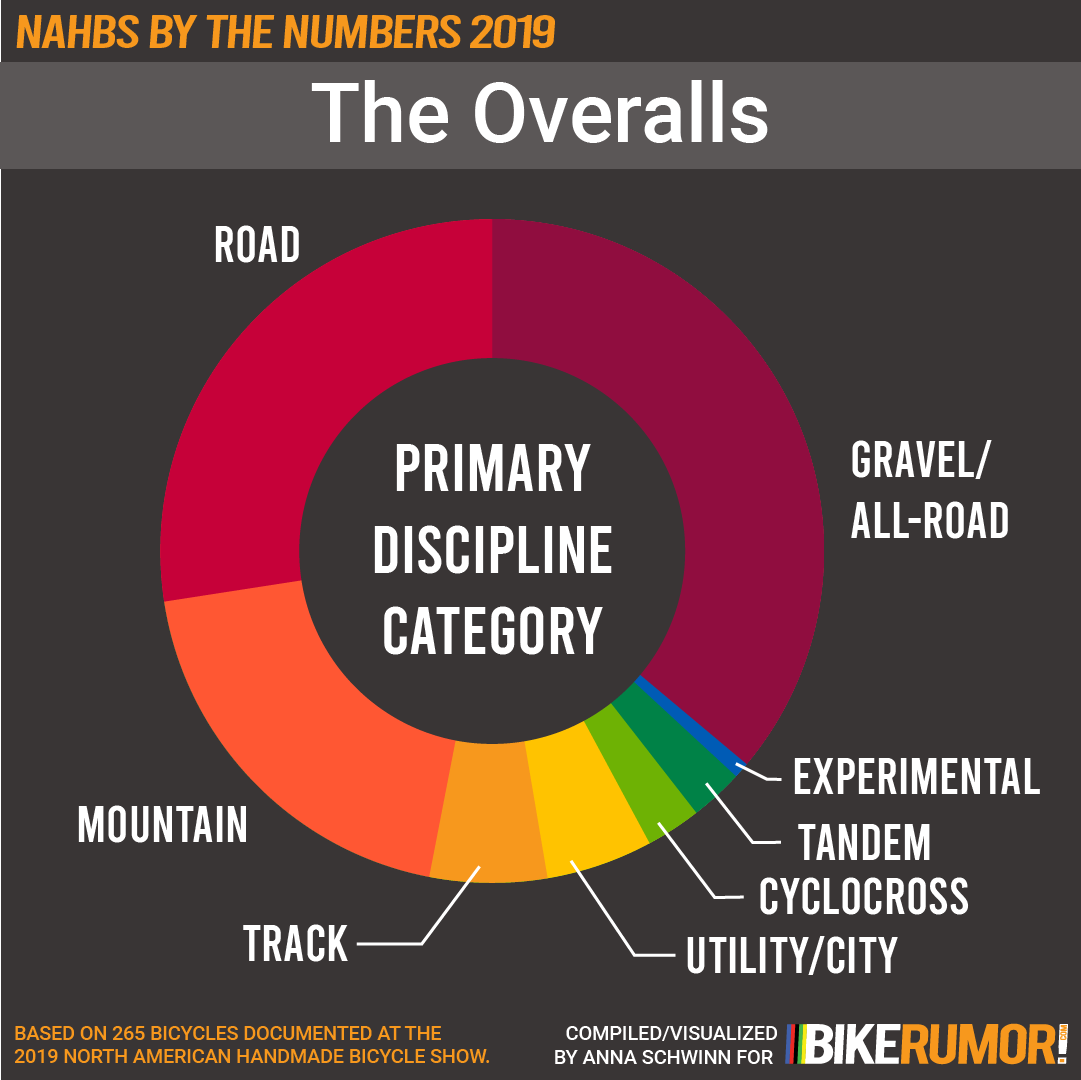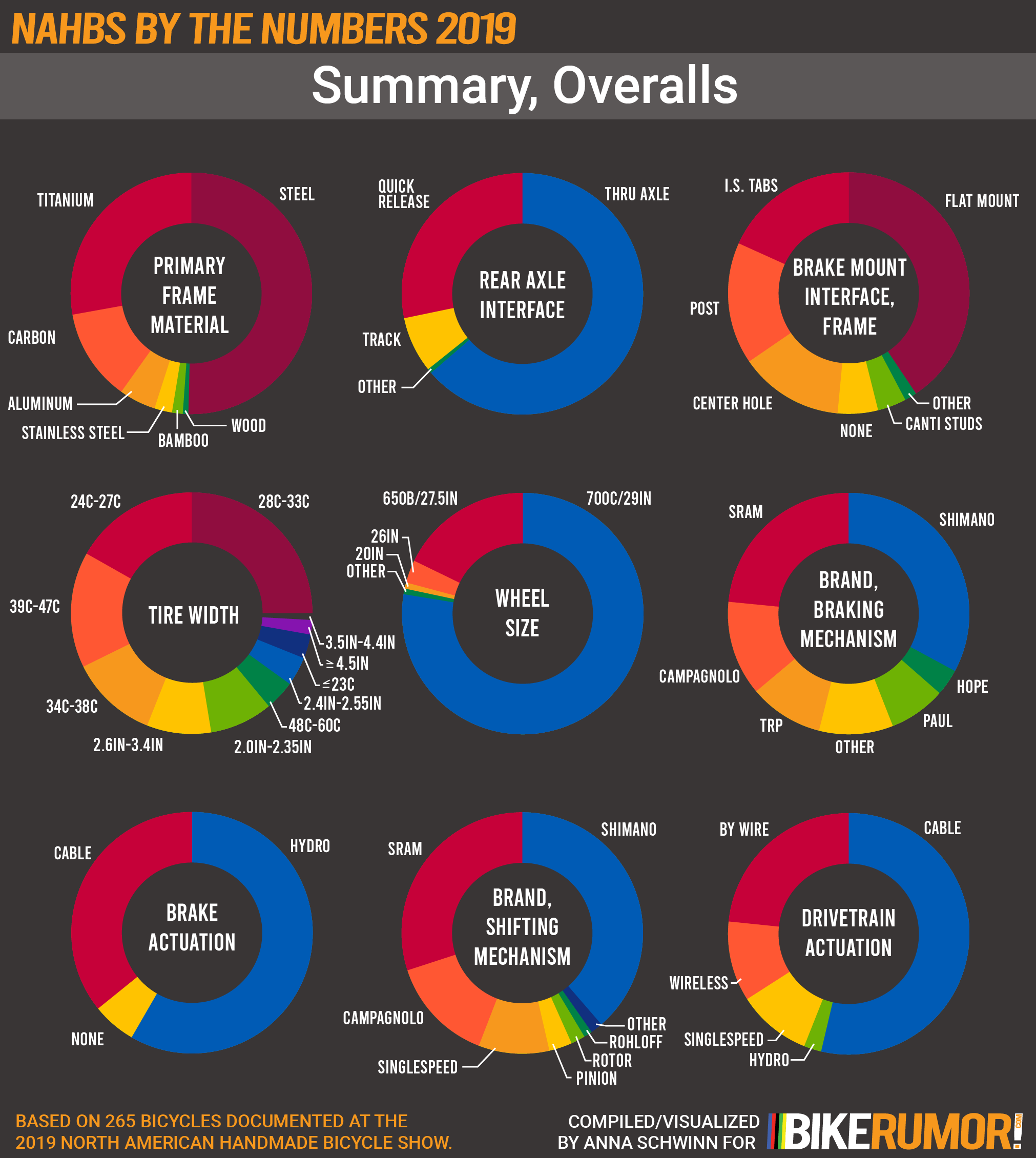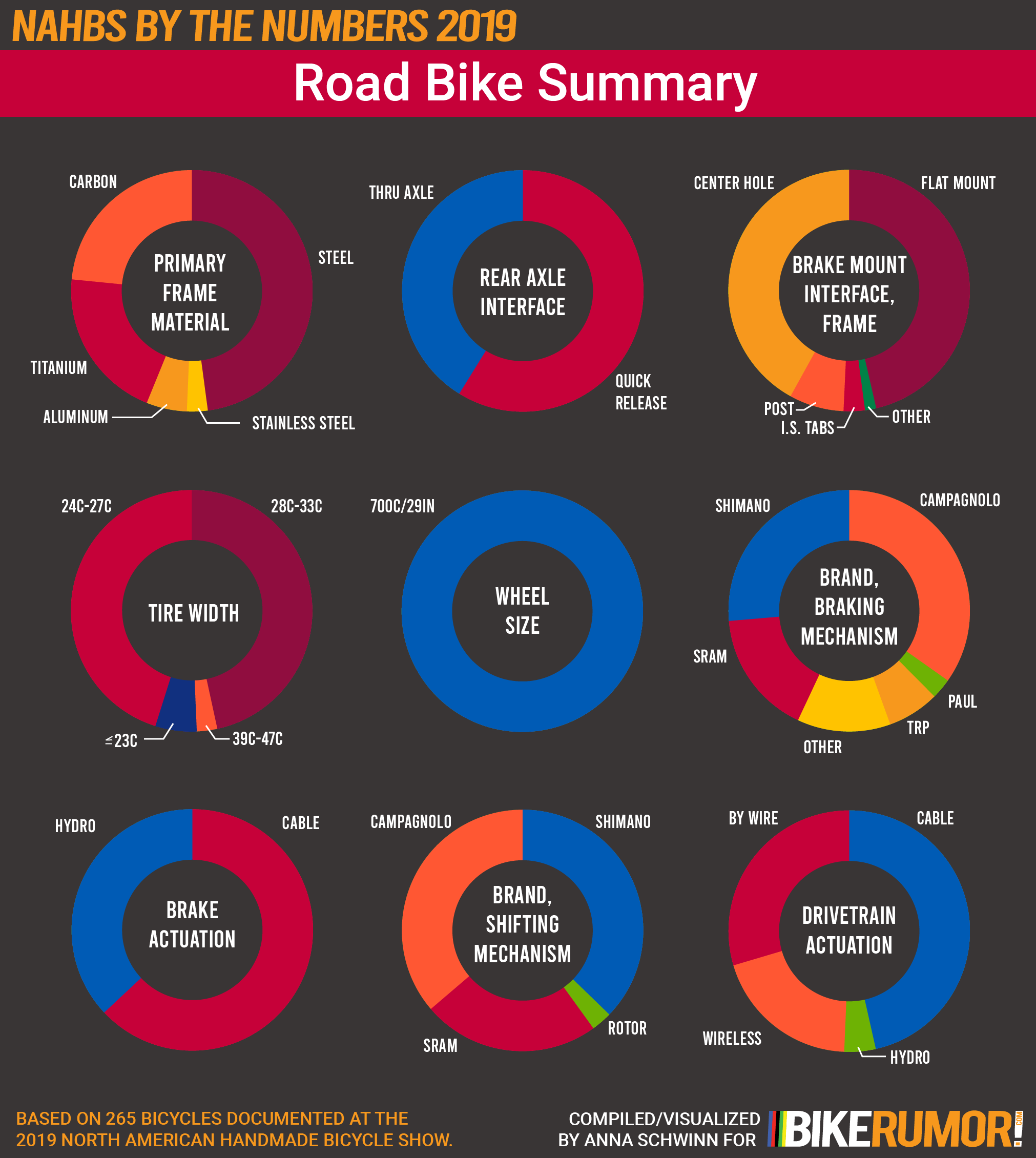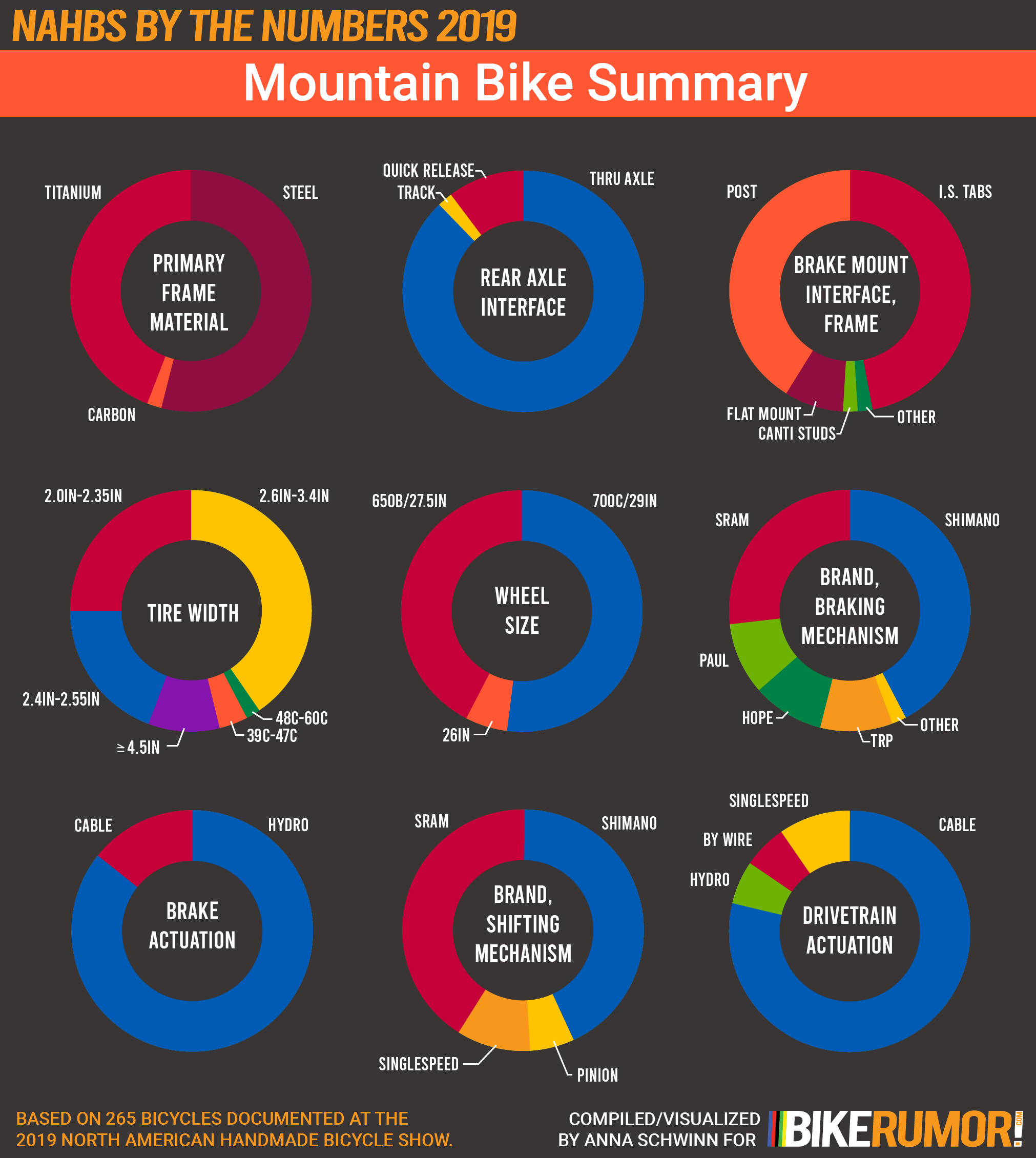In the first installment of NAHBS by the NUMBERS 2019, we took a high level look at a set of data gathered from bicycles at the North American Handmade Bicycle Show this year. Today, we break down that data by discipline to take a closer look at the three most popular types of bikes at the event and paint an informationally descriptive picture of what these bikes were.
Buckle your seatbelts, nerds, it’s about to get informational.
You may remember this little fella from the first installment. Gravel/All-Road bikes were the most commonly documented in this analysis at 96 bikes, with Road and Mountain trailing behind at 73 and 52 bikes each, respectively. For the sake of this piece, I chose to focus on these three popular categories.
For full effect, I created a summary of the overall data here for individual category comparison.
Remember when I talked about personal biases yesterday? No? Okay. So.
Everyone has their personal area of high-fidelity in bikes – a focus area where they have great personal interest, awareness, and understanding. Sometimes that’s within a genre of bike, a material, a form of racing, a tire size, styling, or a point in time where your favorite flavor of bike existed and thrived (I see you out there, “Golden Era” roadies).
The easy trap to fall into is to live within that focus area and compare and/or dismiss categories beyond your personal scope. This bias can become harmful or detrimental to a product category when those sentiments are held by folks making product decisions on larger scales. I’ve worked with product managers who, for example, didn’t understand road, who were coming at road product from a heavily biased off-road personal focus area, and who then tried to bend road product designed for road riders to their personal preference and will. The result? A product and spec that resonated with the product manager but one that didn’t resonate with the customer they served.
But at the North American Handmade Bicycle Show, there are no product managers – only individual customers. Each bicycle represents a set of personal preferences, rather than the preferences or assumptions of someone making bikes for the masses. These are the road, gravel/all-road, and mountain bikes that customers specifically wanted.
So check into those biases you have for a moment… long enough to be aware of them so you can to tune them way out. Peruse the data with a fresh mind and appreciate each discipline as a snapshot.
In the world of road (from the 73 bikes documented), quick releases and center hole-mount, cable actuated brakes were alive. Campagnolo was prominent in drivetrains and dominant in brakes.
Also fun to note, carbon was a more popular frame material than titanium in this category thanks to brands like FiftyOne, Montenegro, Exept, and Pursuit kicking out the skinny carbon jams.
It’s when you compare road and gravel that you really start to see how profoundly different these two disciplines are from one another.
To reiterate, I drew the distinction between road and gravel/all-road at mixed surface use intent. While it seemed like a difficult line to draw at the outset of the event, after attending the show and looking at this data – it’s clear that that these two categories of bikes are very different animals.
Disc brakes are overwhelmingly popular in this segment, with flat mount brake interfaces being the frame builder’s weapon of choice. Hydraulic brakes and thru axles are also dominant in this arena.
Last but not least, we have the mountain bike data (from 52 bikes). Hydraulic disc brakes, thru axles, and cable actuated drivetrains were dominant… and I.S. tabs were the most popular standard for fitting brakes up (with post mount interfaces coming in second).
No, that isn’t an error, there were several mountain bikes with flat mount interfaces on the frame – that fit to post mount adapters. Brands who did this, like Seven Cycles, had a great flat mount solution (and probably a solid process around building with that solution) they were using in other product categories.
Titanium was a close second to steel in this discipline – though we will explore more of the potential reasons why in an upcoming installment.
Stay tuned, kids.
Like what you’re reading? Check out other pieces in NAHBS by the NUMBERS 2019:
Part 1: NAHBS by the NUMBER 2019: The Overalls
Part 3: NAHBS by the Numbers 2019: Fashion and Style
Part 4: NAHBS by the NUMBERS 2019: Regional Themes, Steel Construction





